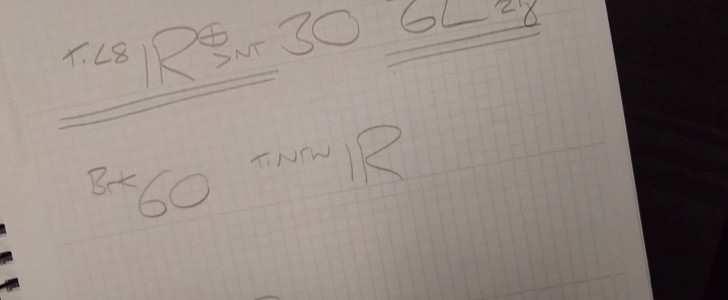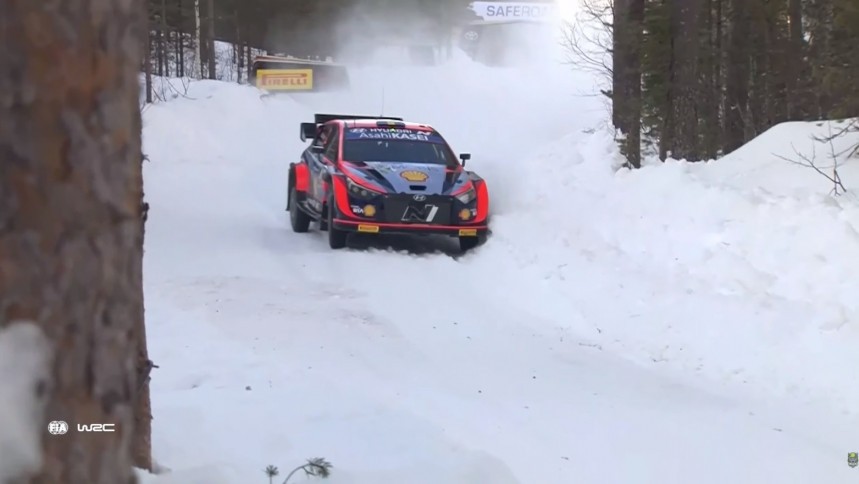Pacenotes are indispensable in rallying, but they are rarely discussed. Fortunately for us, a few rally drivers have explained how they work over the years, and Oliver Solberg has gone ahead and published a vlog about pacenotes and recce, two things that go together like a horse and carriage.
The 20-year-old driver has 18 rallies in the World Rally Championship, but has been competing professionally since he was just 15 years old. Before competing in the maiden class of WRC for the Hyundai factory team in a Rally1 car, the top tier of the sport, Oliver Solberg has learned from the best.
In the latter category, we can also include his parents, Petter Solberg and Pernilla Walfridsson, both successful rally drivers. His father was the 2003 WRC Champion and has successfully raced in the FIA World Rallycross and the FIA ERX Supercar Championships after leaving WRC behind him.
Coming back to pacenotes, these are the commands that the driver must follow to be on the right path during special stages and super special stages of rallies. While many driver and co-driver duos have a distinctive style to their pacenotes, as well as to the cadence of reading them out to the driver, there are a few elements that are common across the board.
First, pacenotes will always include the direction of the upcoming turn (I.e., left or right), as well as the severity of the corner and the distance leading to it. Depending on each corner, there will be further instructions and even warnings, such as "keep in" or "don't cut." The latter is essential, as it means that “cutting” that corner poses a serious risk, such as a barrier, a bridge, trees, or other obstacles.
Meanwhile, "keeping in" a corner means "sticking" to the inside of said corner so that the resulting trajectory after it is optimal for the next corner. It may also mean that there are obstacles on the outside of the corner, and "keeping in" will help avoid hitting them. Hopefully.
The severity of corners is ranked with numbers from 1 to 6, with 1 being the tightest possible corner and 6 being almost straight. Some drivers note them the other way around, but many are using this system. There are drivers who note corners with numbers that go as high as 8 or 9, but most prefer sticking to just adding a plus or a minus before the number that describes the severity of the corner.
The co-driver may be read something like "Left two minus, 50, right six plus, 100," which means that a left-hand corner is up, and it is a rather tight one, and then they will have 50 meters (150 ft) to go until the next corner, which is a six plus (meaning open corner that will open as you drive through it), and then 100 meters (300 ft) to the next one, which is not mentioned here.
As Oliver Solberg and his co-driver, Elliott Edmondson, explain, pacenotes are made during the "recce," which is short for reconnaissance. The latter involves driving the stages in a road car while sticking to the traffic laws and dictating the corners to the co-driver, who writes them down in a notebook.
Each team gets two passes on each rally stage as part of the recce, and the cars they drive will have a GPS on them, which means that they will be fined by the FIA if they break the speed limit.
Once the recce is completed and the pace notes are written and checked, modern rally crews get to watch their recordings again, and many reportedly watch them repeatedly to ensure their notes are correct, as well as to improve them where possible. With that out of the way, watch Oliver's video to learn how they do it.
In the latter category, we can also include his parents, Petter Solberg and Pernilla Walfridsson, both successful rally drivers. His father was the 2003 WRC Champion and has successfully raced in the FIA World Rallycross and the FIA ERX Supercar Championships after leaving WRC behind him.
Coming back to pacenotes, these are the commands that the driver must follow to be on the right path during special stages and super special stages of rallies. While many driver and co-driver duos have a distinctive style to their pacenotes, as well as to the cadence of reading them out to the driver, there are a few elements that are common across the board.
First, pacenotes will always include the direction of the upcoming turn (I.e., left or right), as well as the severity of the corner and the distance leading to it. Depending on each corner, there will be further instructions and even warnings, such as "keep in" or "don't cut." The latter is essential, as it means that “cutting” that corner poses a serious risk, such as a barrier, a bridge, trees, or other obstacles.
Meanwhile, "keeping in" a corner means "sticking" to the inside of said corner so that the resulting trajectory after it is optimal for the next corner. It may also mean that there are obstacles on the outside of the corner, and "keeping in" will help avoid hitting them. Hopefully.
The co-driver may be read something like "Left two minus, 50, right six plus, 100," which means that a left-hand corner is up, and it is a rather tight one, and then they will have 50 meters (150 ft) to go until the next corner, which is a six plus (meaning open corner that will open as you drive through it), and then 100 meters (300 ft) to the next one, which is not mentioned here.
As Oliver Solberg and his co-driver, Elliott Edmondson, explain, pacenotes are made during the "recce," which is short for reconnaissance. The latter involves driving the stages in a road car while sticking to the traffic laws and dictating the corners to the co-driver, who writes them down in a notebook.
Each team gets two passes on each rally stage as part of the recce, and the cars they drive will have a GPS on them, which means that they will be fined by the FIA if they break the speed limit.
Once the recce is completed and the pace notes are written and checked, modern rally crews get to watch their recordings again, and many reportedly watch them repeatedly to ensure their notes are correct, as well as to improve them where possible. With that out of the way, watch Oliver's video to learn how they do it.












